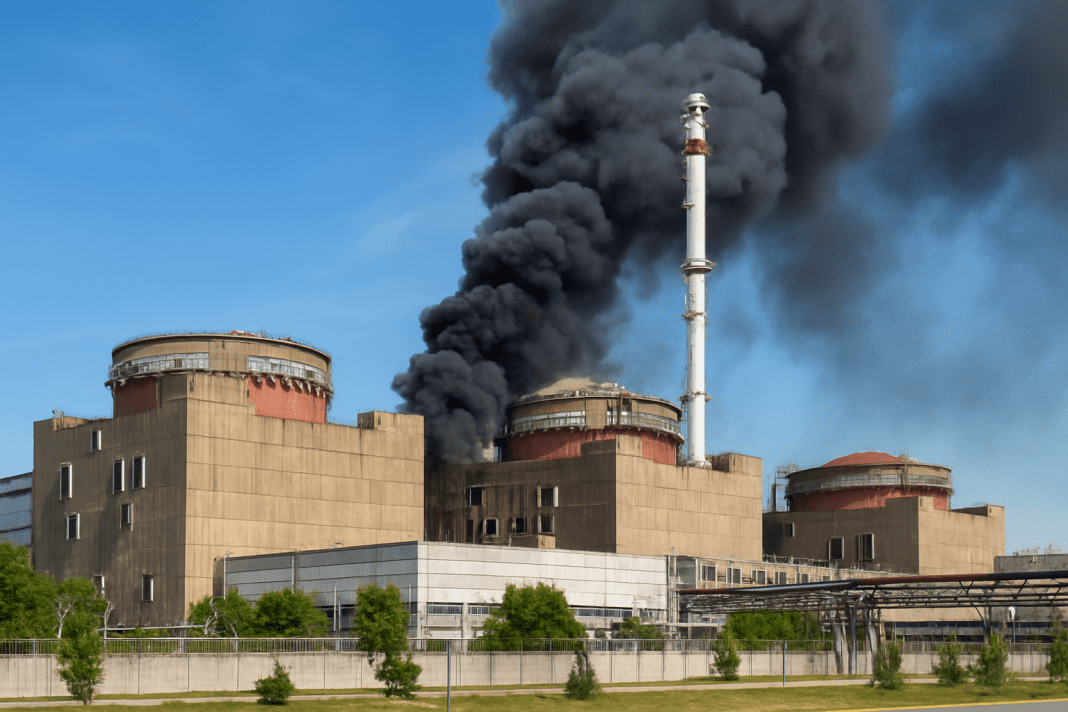Russia has accused Ukraine of striking a nuclear power plant in the Kursk region during a wave of drone attacks overnight on Sunday.
Drone Strikes and Nuclear Concerns
The incident coincided with Ukraine’s celebrations marking 34 years since its declaration of independence from the Soviet Union.
According to Russian officials, the strikes targeted multiple energy facilities, and one attack caused a fire at the nuclear plant. The facility’s press service confirmed that the blaze was quickly brought under control and that no casualties were reported. While a transformer sustained damage, authorities insisted that radiation levels remained within safe limits.
The International Atomic Energy Agency (IAEA), the United Nations’ nuclear watchdog, issued a statement acknowledging reports of the incident. However, it said it had not yet independently confirmed the damage. Its director-general emphasized that nuclear facilities must remain protected under all circumstances, warning of the risks posed by military activity near such critical sites.
Ukraine has not publicly commented on the allegation. Over the course of the war, both Russia and Ukraine have accused each other of striking or endangering nuclear facilities, raising fears of a wider environmental disaster.
U.S. E-6B nuclear command aircraft makes rare deployment to Greenland during Arctic operation
Expanding Battlefield Strikes
In addition to the Kursk plant, Russian authorities reported that emergency crews battled a separate fire at the port of Ust-Luga in the Leningrad region. This port houses one of Russia’s largest fuel export terminals. Officials said debris from downed drones had ignited the blaze, which firefighters later managed to contain.
The Russian Defense Ministry claimed its air defense systems intercepted 95 Ukrainian drones overnight. Despite these interceptions, several sites were reportedly hit. At the same time, Ukraine’s air force said Russia had launched 72 drones and one cruise missile toward Ukrainian territory. Ukrainian officials said they managed to shoot down or jam 48 of the drones.
These cross-border strikes reflect the increasingly intense use of drones and aerial weapons in the conflict, often targeting infrastructure deep behind front lines. The incidents come amid continued ground fighting, especially in Ukraine’s eastern Donetsk region. Russia said over the weekend that it had captured two villages in the area.
Meanwhile, both sides reported a new prisoner exchange. Russia announced that 146 servicemen had returned home, along with eight civilians from its Kursk region. Ukraine confirmed that its nationals were also released, including soldiers, border guards, and civilians. Many of them had reportedly been in captivity since 2022. Ukrainian President Volodymyr Zelenskyy said only that “our people are coming home,” without specifying exact figures.
Independence Day Messages and Support
While reports of drone strikes and military operations dominated headlines, Ukrainians marked Independence Day with ceremonies and speeches. The national holiday commemorates Ukraine’s 1991 declaration of independence from the Soviet Union.
🌍 ‘Half the world down’ — Pakistan army chief’s chilling nuclear threat in US shocks the world
President Zelenskyy addressed citizens from Kyiv’s Independence Square in a video message. He highlighted the resilience of the country and emphasized that Ukraine’s future lies in its own hands. “We are building a Ukraine that will have enough strength and power to live in security and peace,” he said.
Foreign dignitaries also joined the celebrations. U.S. envoy Keith Kellogg attended the ceremonies, receiving a Ukrainian state award in recognition of international support. Canadian Prime Minister Mark Carney visited Kyiv on Sunday, pledging fresh military assistance. Canada’s new aid package, worth 2 billion Canadian dollars (approximately $1.5 billion), will provide weapons and resources to strengthen Ukraine’s defense capabilities. Zelenskyy and Carney also discussed the potential presence of Canadian forces in Ukraine as part of reassurance efforts.
Norway announced a separate pledge of 7 billion kroner (around $695 million) to help supply air defense systems. In partnership with Germany, Norway is funding two Patriot missile systems and additional radar technology. Officials in Oslo described the package as critical to protecting Ukrainian skies from drone and missile threats.
Religious leaders also marked the occasion. Pope Leo XIV offered prayers for peace during his weekly blessing in Rome. He called on the faithful to join Ukrainians in seeking an end to the violence. The Pope also sent a telegram to Zelenskyy, urging dialogue to replace conflict and expressing solidarity with those suffering in Ukraine.
Balancing Celebration and Conflict
Ukraine’s Independence Day highlighted both the nation’s determination to celebrate its sovereignty and the continued strain of war. While fireworks, concerts, and public gatherings were held across parts of the country, the day unfolded against a backdrop of drone attacks, battles in the east, and prisoner exchanges.
Deadly precision: Ukrainian drone-laser combo kills 5 Russian sailors in Kherson Oblast
The symbolism of Russia accusing Ukraine of striking a nuclear plant on the very day of national celebrations underscored the deep divisions and risks of escalation. With international partners reaffirming support and religious leaders calling for peace, Ukraine’s independence anniversary once again blended festivity with the stark reality of a war that has stretched on for more than two years.
For Ukrainians, the day carried both pride and uncertainty — a reminder of past struggles for freedom, and a reflection of present challenges where national survival remains at the forefront.

